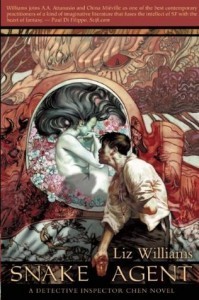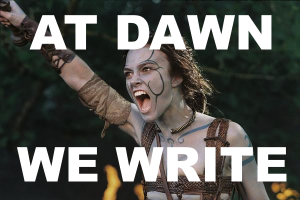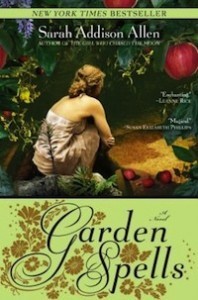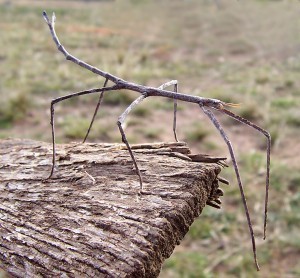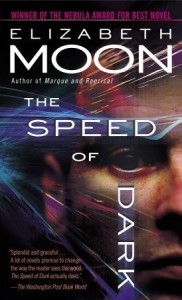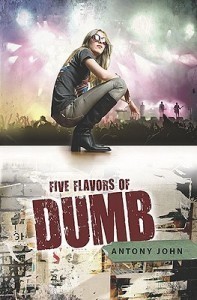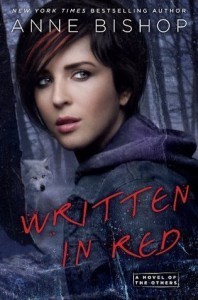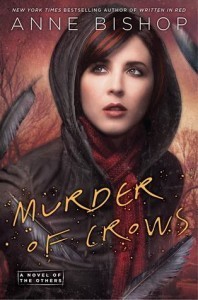Rachel Neumeier's Blog, page 358
November 5, 2014
Recent reading: SNAKE AGENT. Wow, quite a prologue –
Hanging by his heels and twisting slowly in the draught that slipped beneath the crimson door, Detective Inspector Chen tried desperately to attract the demon’s attention. Yet despite his whispered pleas, the demon’s eyes remained tightly shut, and his wet, black lips moved faintly, as if in prayer. Hearing the alchemist’s heels retreating down the passage, Chen tried again, “Tso! Listen to me!”
The demon’s only response was to squeeze his eyes even more tightly closed. Chen sighed. Tso had never liked to confront uncomfortable realities, and had gone to some lengths to avoid them, but now he, too, was dangling by his heels from a hook in the ceiling and – thought Chen, bitterly – the truth of what the demon had done must finally be faced.
“Tso, I know you’ve probably had a bang on the head, but I’m quite well aware you’re still conscious. We have to find a way of getting down,” Chen insisted.
“No use,” the demon whined, without opening his eyes. “There’s no way out of here.”
“Nonsense,” Chen said, more firmly than he felt. The blood was rushing to his head and making him dizzy: the metal walls of the chamber seemed to tilt and spin. Reflected within them, his face was no more than a blurred, unhappy moon. He tried not to think about Inari, but it was hard to keep anxiety at bay. Stop fretting about your wife,” he told himself. The badger will look after Inari; all you have to do is worry about getting down and getting out of here. To the demon, he said, “The alchemist will be back in a little while, and then we’ll really have problems. Now, listen. My rosary’s on the table to your right – can you see it? I want you to try and reach it.”
The demon’s eyes opened at last, dazzling and sudden. Chen stared, blinking, into the hot-coal heart of the demon’s gaze.
“Your rosary?” Tso said, nonplused. “How? My hands are tied.”
“You’ll have to swing over and see if you can grab it with your tongue.”
“But my tongue will get burned!”
“When that nightmare of an alchemist comes back you’ll have a damned sight more to worry about than a sore tongue,” Chen said with barely restrained patience. The demon’s mouth opened and Tso emitted a long, hissing breath that stank of offal. Chen was unable to repress a shudder.
“Oh, very well!” the demon complained. “I’ll try.” He began to swing, dangling like some monstrous piece of bait from the hook in the ceiling. Chen watched, holding his breath, as the demon came within a couple of feet of the table. The long black tongue shot out and flickered over the surface, missing the rosary. Tso tried again, anchoring himself to the table leg with his tongue. The barbed, sensitive tip probed over the surface of the table, flicked the rosary, and recoiled.
“Hurts!” the demon said, indistinctly.
“I’m truly sorry. But if we don’t get out of here …”
Tso tried again, and this time flicked the rosary off the table with all the neatness of a toad catching flies.
“Well done!” Chen enthused. The demon hissed with pain as the rosary seared the end of his tongue, but the barbs held it securely. Swinging back, Tso flicked the rosary in the direction of Chen, who lunged for it with his teeth and missed. The rosary, detaching itself from Tso’s tongue, wrapped around an ornately carved pineapple that decorated the edge of the alchemist’s desk, where it hung, dangling tantalizingly out of reach, just as the alchemist stepped back through the lacquered door, ceremonial machete in hand.
This is the complete prologue from SNAKE AGENT, the first Detective Chen novel by Liz Williams. Liz Williams has written over a dozen books, it turns out, but I hadn’t heard of her until someone here mentioned her some time ago and I decided to try this book. Which was really good! It’s a rather dense urban fantasy that in some ways feels like SF, because it’s set in the future.
Chen is a detective in Singapore Three, the third city of the Singapore franchise, which is currently constructing a sixth city down the coast, if I recall correctly. He works under the auspices of Kuan Yin, the Compassionate and Merciful, She Who Hears the Cries of the World. At the moment, though, he’s not in good graces with the goddess, having recently married a demon wife – hardly the act of an impeccable servant of Heaven.
Chen deals with supernatural crime, as you might imagine, and when the story opens, he is trying to find out what happened to a murdered girl – not so much what happened to kill her, though he does find that out as well, but his focus is more on why her ghost has gone missing rather than making its way to Heaven, and his priority is not so much on the crime that killed her, but on making sure the ghost is sent properly on its way. In the course of this investigation, he partners with a demon employed by Hell’s own police force, Seneschal Zhu Irzh, and searches out nefarious activity both on Earth and in Hell.
This is all a lot of fun. Not that the book is humorous or light; it’s actually rather gritty and quite dense; but the structure of the world and the detailed worldbuilding is so unusual and a great delight. We have big stuff like the bioweb in which girls earn the money to pay their dowries and the Ministry of Epidemics – we get a rather horrifying tour of the Ministry of Epidemics – and the path that departed souls take on their way out of life. Then we have a huge number of little details like the rosary and the use of incense and the badger-teakettle (seriously: a badger-teakettle!).
Though the world is gritty, the writing is quite lyrical. When Chen finally catches up with the lost ghost of the dead girl and sends her to Heaven, the scene is described this way: Chen had a glimpse of a place that made him cry out: a golden sky above glittering, diamond-blossomed trees, and the fragment of shadow that was Pearl Tang running among them until it was lost in the light.
Even Hell, for all its grindingly frustrating bureaucracy and everyday horrors – cloaks made of human skin and so forth – is often described lyrically, as here: The worst thing about the lower levels was not the thin, high voice that sang incessantly through the streets like the whine of a vast mosquito, nor the jets of acrid flame that shot at random from between the stones, but the dust-laden wind that blew in from the distant barrens. Dust stained Inari’s skin and seeped beneath her clothes, matting her hair and blocking her nose. She couldn’t stop sneezing; it was worse than the hay fever to which she’d been prone on Earth.
Actually, Inari is wrong: the dust isn’t the worst thing about the lower levels of Hell. But still, that’s enough to make it clear you wouldn’t want to visit.
So, beautiful writing, an unusual setting, and sympathetic characters – Seneschal Zhu Irzh is likeable, for a demon, not to mention Inari and Sergeant Ma, and of course Detective Inspector Chen is a great protagonist – I can see why Williams has been nominated a couple of times for the Philip K Dick Award. I’m glad one of you drew her to my attention – thanks, whoever you were! – and I’ll be picking up the next Inspector Chen story soon, especially since I found SNAKE AGENT engaging and yet best enjoyed in small doses, easy to put down when I needed to get my own work done.
Now, about that prologue.
I was so unimpressed by the infodump prologue of Anne Bishop’s WRITTEN IN RED, though as you may recall, I enjoyed the story itself very much. The two books are actually very interesting to compare, they are so different. WRITTEN IN RED is catchy and a real page turner; SNAKE AGENT is much more sophisticated and has much deeper worldbuilding, but I wouldn’t exactly call it catchy. And so forth. But, for the moment, let’s stick to SNAKE AGENT’s unusual prologue.
I think a lot of prologues are very infodumpy and quite boring. Others drop the reader into the middle of the action, but, with the action taking place out of context, often fail to catch the reader’s attention. Most prologues deal with events that take place before the real story starts – that’s certainly true of the prologues I’ve occasionally put in my own books.
The prologue in SNAKE AGENT is quite different. For one thing, it’s the antithesis of an infodump: instead, it drops the reader into the middle of the action without explaining anything. I think it works because it is such an intimate scene, and because the details start to build the world right away even without explaining anything. We can immediately tell that Chen is the guy we should care about and that he is in a tight spot.
Also, the prologue deals with events that take place late in the action of the book, rather than before the story properly opens. Chapter one then flicks us away into the backstory that leads up to that alchemist and his machete. We catch up with the prologue on page 313, and by the time we get there we know a whole lot more about Chen and Tso and the alchemist and the world and what’s going on.
This is an unusual technique – this start at the end and then back up to show how we got there. What do you all think of this kind of prologue? Does it remind you of anything?
Here’s one, which I’m sure you will all recognize:
No shit, there I was . . .
We’d been cut up so many ways and so many times we hardly had a skirmish line, and the enemy kept get reinforced. I, like the rest of the outfit, was exhausted and terrified from swords buzzing past my ear and various sorts of sorcery going whoosh over my head, or maybe it was the other way around; and there were dead people moaning and writhing on the ground and wounded people lying still, and that was almost certainly the other way around, but I’m giving it to you as I remember it, though I know my memory sometimes plays tricks on me.
More on that in a second.
First I have to ask you to excuse me for starting in the middle, but that’s more or less where it starts.
That’s DRAGON by Steven Brust, and after that opening scene – which is not presented as a prologue – Brust takes us forward and back in time, in little bursts, with much more time being spent in the backstory that answers the question “How did Vlad get into this situation?” than in moving forward to deal with the climactic endgame that flows out of that situation. That’s not exactly what we see in SNAKE AGENT, but the opening technique definitely seems similar.
A much older book that also pulls something of the same trick is Roger Zelazny’s DOORWAYS IN THE SAND, a story where Zelazny seems to have really enjoyed playing with this technique. Every chapter open with the protagonist, Fred Cassidy, in some weird or dangerous situation. Then we go back and see how he got into that situation, then we see how he gets out of it. Then the next chapter follows the same peculiar path, always out of order, with the most exciting bit first.
I seem to have given my copy away, I suppose the last time I was trying to clear out room on my shelves for new titles. Hmm. Now I would kind of like to re-read it.
Anyway, I will definitely make a note of this interesting and different kind of opening and story structure. I always seem to move straight from front to back, but it might be fun to try to structure a story more from the inside out sometime, just to see how it works.
November 4, 2014
Science Fiction Month –
I just noticed this today, so I’m a little late, but Rinn Reads and Oh The Books are hosting a “Science fiction month” this November. It caught my eye because I really read so much more fantasy these days than science fiction, which means I particularly appreciate pointers to SF works I might have missed.
Though I haven’t missed ANCILLARY JUSTICE! It’s on my actual physical shelves right this minute, but I don’t want to start it till I have time to enjoy it, so in a few weeks is better than right now.
So, anyway!
At Rinn Reads today, we find a review of THE MARTIAN by Andy Weir. It sounds like a thriller —
Six days ago, astronaut Mark Watney became one of the first men to walk on the surface of Mars. Now, he’s sure he’ll be the first man to die there.
It started with the dust storm that holed his suit and nearly killed him, and that forced his crew to leave him behind, sure he was already dead. Now he’s stranded millions of miles from the nearest human being, with no way to even signal Earth that he’s alive – and even if he could get word out, his food would be gone years before a rescue mission could arrive. Chances are, though, he won’t have time to starve to death. The damaged machinery, unforgiving environment, or plain-old “human error” are much more likely to get him first.
This book didn’t entirely work for Rinn, I see, but it’s gotten a whole lot of good reviews on Goodreads, and it does sound like the kind of thing that would appeal to me when I want a nailbiter.
Meanwhile, at Oh The Books, we find a bingo card for SF readers — that’s a pretty cool idea. I like the “floating city” category, but is it quite far to have both “mad scientist” and “absent-minded professor”?
Actually, it might be fun to different bingo cards, one for hard SF and one for science fantasy. In most cases, along with superheros, I’d put time travel and telepathic animals in the latter category. And . . . I don’t know . . . any kind of psychic stuff.
I noticed this month because of Fantasy Book Cafe, by the way.
Here’s the master schedule – far from complete as yet, it’s an ongoing project — for Science Fiction Months. Lots of participating blogs. Should be fun to check in now and then this month and see what everyone’s talking about!
November 3, 2014
Welcome to November!
Which to lots of people means welcome to NaNoWriMo. I like the concept of NaNoWriMo, I really do. I like how it creates enthusiasm and gives so many people a push! Getting over the commitment hump is a big deal: I will indeed write a book! you say to yourself, and when you’re 10,000 or 30,000 or 50,000 words in, you know you really meant it. I remember how I felt when I finished MY first book (ever, not that got published.) It was this big feeling of Wow, I can do this. That made it much easier to write another book.
Everyone posts about NaNoWriMo, which is to say, I personally notice lots of posts, though really that says more about whom I follow, I guess. I am sure we are all waaay past the point of needing to be told that your first 50,000-word draft is (a) too short to really be a novel, and (b) probably not polished enough to send off to agents. Though absolutely everyone seems to feel those are required points to mention. What I like, though, are posts that reflect the energy of NaNoWriMo.
Here’s Chuck Wendig’s NaNoWriMo pep talk. Not many people pour as much energy into posts as Chuck. They crackle off the screen.
Here’s another pep talk from Erin Morgenstern. I haven’t read THE NIGHT CIRCUS yet, but it’s been on my radar for a while. My favorite tidbit from this post: When in doubt, just add ninjas.
I laughed. What can I say? I like ninjas. Especially psychic space ninjas.
Here’s a note from Sage Blackwood, reminding us that we learn to write by writing. Which is true. It took me somewhere around 500,000 practice words — the equivalent of 5 novels — before I sat down and wrote CITY, btw. So I would also call that thing about a million words of practice basically true.
I must admit, I have never participated in NaNoWriMo myself. For me, major writing pushes take place in the dog days of summer and in the dead of winter. But I have written 50,000 or more words per month about . . . uh . . . four times now? Five? Yeah, at least five times: CITY; the 2nd and 3rd Griffin Mage books; the final 220 pp of a duology, which I wrote in 19 days (unpublished); and most recently KERI (not the real title). That’s five where I’m positive I hit at least 50,000 words in a month.
I mean, really, that’s only 1700 words per day, which is about five pages, and that’s very doable.
Here’s my favorite image for NaNoWriMo, or for any big writing push at any time of the year:
October 31, 2014
Happy Halloween!
A few links to make sure you’re all in the mood: Of course everybody has Halloween posts up, but since I’m not into actual horror, I lean toward this post at tor.com: Twelve books to bewitch you. My favorite of the titles on the list: DEALING WITH DRAGONS. Because hey! Everybody loves Morwen, right? Plus, while some of Patricia Wrede’s earlier books are good, I think she really hit her stride in the Dragon series.
Oh, wait! It’s possible my *real* favorite on tor.com’s list is GARDEN SPELLS. Katherine Addison Allen is hard to beat. The magic is subtle in that one, yes, but it lends such charm to an already lovely story. You can click through and see which one you might pick.
While we’re on the subject of witches, Heidi at Bunbury in the Stacks is having a giveaway focused on a charming MG witch series — THE WORST WITCH. Heidi says: “Guys, these books are adorable. For every kid (or adult) who has ever struggled at anything and learned to not only laugh about it, but to keep trying, this is a series for them. Mildred Hubble is a terrible witch. She’s a klutz, she’s scatterbrained, in short–a complete misfit built for magical mayhem. Everything always seems to go wrong for her from her tabby cat (it was supposed to be black) to her broom (no longer in one piece).”
Naturally the giveaway runs through today, so there’s still time to click over and enter.
Also, check out these fantastic Halloween cakes! Most of them have links to the recipes, including my favorite, this pretty but not spooky Pumpkin Chocolate Cake:
The prettiest might be the spider web cake. You can click through and see what you think. Also, somebody please explain why a mouse in a maze is considered a Halloween cake? Am I missing something? To me, that looks like something you might take to a potluck at the psych department.
Anyway, have a great Halloween! I don’t exactly dress up, but I wear my orange “I Don’t Do Costumes” t-shirt and skull earrings. And I enjoy seeing what other people (who go to way more effort that I do) wear.
October 30, 2014
Must be fall …
So, I realize that OTHER people will have “I can tell it’s fall because of these beautiful leaves” types of posts, but *I* can tell it’s fall because yesterday — just in one day! — I captured and released THREE of these big guys:
This one is pictured outside, which is certainly a superior environment for spiders. I hope my little pets are all happy outside, though probably they came in for a reason since it is getting pretty chilly. Tough. Out!
I can’t squish them, though. They are too big. I can’t bring myself to squish things that are, what? about an inch long? Longer? Besides, I like spiders, especially wolf spiders like the one above. My favorites are the tiny little wolf spiders that jump.
I do kill brown recluses, though. We get lots of them in the spring. They’re mostly harmless because they’re so reluctant to bite, but, you know, puppies.
One of the other insects of fall is much more entertaining than spiders. Do you get these?
Around here, they seem to turn up at the tag end of summer. Their camouflage is not very effective when they walk up a cream-colored wall, but then birds are pretty unlikely to find them under those circumstances, I suppose.
I like them. They don’t have the predatory elegance of preying mantises or the charm of syrphid flies, but they’re interesting. If they get in the way, I just pick them up and toss them into the woods. Someone asked me a few weeks ago if they bite. No. The ones we get around here are completely harmless. They are too rigid to even manage to turn around. You just pick them up exactly like the sticks they resemble, except more gently of course, and toss them out of the way.
Update: here’s an example of a syrphid fly, also called hover flies because (obviously) they can hover.
October 29, 2014
Revision update
You wouldn’t think it was possible to end a sentence without a period. Just a blank space Followed by a new sentence. But this is surprisingly easy to do. Not like you see it ever page, but more than once per manuscript is not unusual.
Hey, did you notice the typo in that sentence? It’s amazingly easy to type “ever” when you mean “every,” and even easier to make the reverse mistake. Those terminal letters that OUGHT to be there just flow out of your fingers. Generally you catch this, but not always.
If you rewrited a sentence, it’s possible to wind up with an abomination where the verb is in the wrong tense. Just every now and then it will slip by despite re-reading. This is especially possible if you are happy with the scene and don’t re-read it carefully.
My laptop keyboard is getting pickier about how hard you hit the keys, and frequently the “s” doesn’t appear at the end of a plural word because I haven’t hit the key hard enough. I have to hit the “t” a bit harder than other letters, and so I’m constantly typing I instead of it. (Autocorrect capitalizes the I when the t doesn’t appear.) Also, I randomly hit the “k” when reaching for other keys. If I’m tired, I can easliy reverse letters or type “pebble” when I meant “people.” Generally I backspace and fix this kind of thing right away — sometimes I seem to spend as much time backspacing as moving forward — but every now and then a typo will slip through.
Still, I’m pretty happy with how this revision is going.
There were no copy-edit types of corrections for the first 83 pages, and no substantive suggestions until p. 121. That’s pretty good! The number of “Great!” and “Hah!” notations outnumbers the typos by a good margin, so that’s satisfying.
I’ve done a full sweep through the manuscript to address big points, and some of those big points will get revisited again before I declare myself to be finished because when you get suggestions like “Can you increase tension between these two characters toward the beginning?” and “Can you keep Keri more vulnerable and flawed through the middle?”, it’s hard to know when you’ve done enough.
Clarity issues — “Wait, how does this make sense?” — are usually easier to address. Sometimes I must make up something brand new to explain why something makes sense because in fact it didn’t but I don’t want to change that plot point. Sometimes I just need to add a sentence to clarify something I already understood myself. Both kinds of clarity adjustments are simple because one or two sentences in the text will do it. You see how different that is from “Make this character more vulnerable through the middle,” which makes you reread and tweak a huge swath of the verbiage. I’m never sure I’ve done that well enough until my editor gives the revised manuscript a thumb’s-up.
But for now I’m still making fast progress just going through the printed manuscript and tweaking in response to my editor’s many hand-penciled comments. It’s satisfying because it is going fast and so far every tweak has been easy. Plus I find I like the story myself, always very reassuring at this stage. I could probably finish this revision by Monday, but I think I will finish it, then go to the World Fantasy Convention, then come back and read through it one more time with an eye to fiddling with those more nebulous big-scale tweaks. Then I can send it around the middle of November, comfortably ahead of my editor’s request for getting it back to her by the middle of December. THEN I can go on with other projects.
October 28, 2014
Quick! Who are some great characters with disabilities?
So, I’m going to WindyCon this year, and I’ve been put on a panel about writing characters with disabilities. Which is great in one way, because I really admire an author who can do a good job with this. And peculiar in another way, because I haven’t managed to do that myself. It’s in the (large) category of things I would like to do but haven’t tried yet, along with write a book with an older female protagonist and write a book set in an alternate Ottoman Empire.
Anyway, back to characters with disabilities. The thing which is most important is to have the character be a great character full stop, and then also have a disability. I personally don’t like it if the person has a disability to start with and is then magically “cured”, because unless that’s handled extremely well, it sends a strong message that you’re not worth much unless you’re physically perfect.
So!
One of the most brilliant books ever, far and away the best thing Elizabeth Moon’s ever done.
And
A contemporary YA with an excellent protagonist who is deaf.
I can think of other examples that did not work as well for me as the two titles above, though not many. But what I’m most interested in is any titles you all can think of where the author handled a character with a disability with grace and skill. Oh, wait, I’m also interested in examples where the author might not have pulled this off quite as well.
Step right up with your suggestions, please! I would like to read a good handful more titles before WindyCon, which is only a few weeks.
Learning history via YA fiction –
I have long believed that the best way to learn about history is via historical fiction. Lots of it is meticulously researched, and nearly all of it will do something that no textbook can — it will give you the flavor of life in that period and make you care about the people who lived then.
This infographic, which I found via tor.com, is one heck of a resource for anybody who loves historical fiction and historical fantasy! I love how it sets titles into place between real events, so that we can get a clear picture of “when we are” in each book.
Like, here’s the birth of Aristotle, and here is the destruction of Pompeii, and SPHINX’S PRINCESS by Esther Friesner is right in between the two events.
The timeline goes from the Bronze Age right up to the 1990s. Very impressive! Click through and then click on the image to blow it up to a beautiful scrollable graphic.
I must admit that I have read hardly any of the books that are listed here. Oh, there’s CODE NAME VERITY! That one I’ve read.
Things that would make this infographic even better:
Include adult fiction! Of course there are an infinite number of Regency romances, but beyond that, how about Barbara Hambly’s A FREE MAN OF COLOR? That series would belong in the 1830s slot, and her Ysidro novels would cover the early 1900s. Of course her “Hamilton” mysteries would also fit in this timeline very well, set right before the Revolutionary War.
Hambly is, as you can see, the one author who springs to me as best bringing historical eras to life. What’s your favorite YA or adult title that you’d most like to see on this timeline?
Characters to dress up as for Halloween
I don’t do costumes! Except on *very rare* occasions. I just don’t.
But!
I really love this blog post on different fantasy characters a girl might dress up as. I’ve only read a few of the books mentioned, though all are at least on my radar and some are actually on my TBR pile. We have Cath from FANGIRL and Tamara Pierce’s Alanna and Maggie Stiefvater’s Blue Sargent and Elizabeth Bennett from (obviously) PRIDE AND PREJUDICE — those are the ones I’m actually familiar with. And a bunch of others that I don’t (yet) know.
What makes this post, at the Writer of Wrongs blog, special: pictures of the costume components and accessories for all the costumes!
I especially love Lola Nolan’s boots. Those boots make me want to read LOLA AND THE BOY NEXT DOOR. That cloak or coat or whatever it is is also extremely snazzy.
And Celaena Sardothien’s deer pendant from Throne of Glass by Sarah J. Maas! What a cool pendant! I love it!
And check out how to turn your arm into a cyborg arm for CINDER by Marissa Meyer. Very cool, but it would require a steady hand and more artistic ability than I think I have.
Anyway, check out the post. It’s almost enough to make me want to put together a real costume this Halloween.
October 27, 2014
Well, that was a surprise: WRITTEN IN RED by Anne Bishop
I got a good bit of work done this weekend on my current revision. I really did! But it was no thanks to Anne Bishop, whose WRITTEN IN RED was a whole lot more distracting than I anticipated. I did nothing useful Friday evening because I HAD to keep turning pages! And the moment I finished it, I HAD to get the second book, MURDER OF CROWS, and start that one.
I also preordered the third book, but it doesn’t come out till March, which suddenly seems farther away because I WANT IT NOW!
Ahem.
Okay, I’ve been working my way through all those UF titles I’d accumulated, and they were all basically just okay for me. (I haven’t read the one by Jacqueline Carey yet.)
Then I got to WRITTEN IN RED, and despite the unnecessary infodumpy prologue, I was unexpectedly hooked as soon as I got into the story.
There are, I will just mention, also a handful of infodumpy bits of dialogue that are very nearly on a par with, “As you know, Monty, there are only four really big cities on the whole North American continent.” To which the only proper response would have been, “Uh, yeah, I do know, so why are you telling me this?” So now and then a bit of worldbuilding background really could have been worked in more subtly. However, this didn’t happen that often or take up that much space, so those bits of stiff dialogue didn’t really get in the way of enjoying the story.
This is a rare creature for a UF novel: third person with multiple points of view. It also has no romance to speak of, Others that are emphatically not human and not integrated into human society at all, and a world where history has unrolled in a quite different way from ours. I loved it, obviously.
I like Meg a lot, and her weird background makes her a good protagonist — she is naive about the world for good reasons, so when her take on something is out of the ordinary or when someone explains something to her, it seems natural. Plus she is just a nice person. I was so charmed by the scarf she got for Winter! I could actually almost buy into how central she becomes to everyone else in the story. If she’d been handled even a bit less deftly, she would have become a terrible Mary Sue-ish type, but I don’t think she did.
I like Monty a lot. I always like The Good Cop, and in this world, good police work takes on a new context, since Monty’s unit is basically all about making sure town authorities cooperate with the Others to avoid having their town wiped off the map.
I like Simon Wolfgard a lot, particularly how non-human he is. I like the background of the shapeshifters among the Others and the explanation for why they can take the different forms they do. I like how confused he is by the strange concept of a nonedible human friend. I like his puppy, and I love how Meg got that traumatized youngster out of that crate.
I enjoyed the interweaving of all these characters. This worked well for me
The worldbuilding is wild. Bishop sure let herself go when she designed the different types of Others and set up her world’s history. I almost kind of sort of believe in how she set it up, which is quite an accomplishment, because the Elementals in particular would turn into a complete mess in a less well-written book.
And this series does have good writing. I think Bishop has improved quite a bit since the Black Jewels series. I thought that series was amazingly catchy and readable, but I wouldn’t have called it flawless. I think almost everything about the Others series is better — writing, plotting, worldbuilding, characterization, all of it. The interaction between the human characters and the nonhuman characters is fun to read about; they really don’t understand each other at all. The day-to-day details about Meg’s life are fun to read about; it’s always interesting when an author makes ordinary life interesting. And then, of course, stuff starts happening and we find out more about why Meg is special and, well, as I said, it got pretty distracting. I’ve preordered the third book, and I hope Anne Bishop keeps going with this series for a while!

